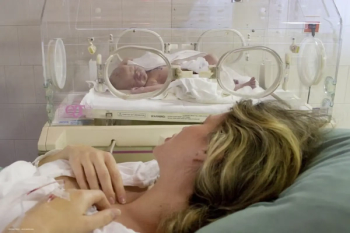
Oxurion NV will file for bankruptcy following KALAHARI data release
In the clinical trial, Oxurion’s novel PKal Inhibitor, THR-149, did not meet its primary endpoint
On Monday, Oxurion NV announced it would file for bankruptcy following the release of topline data from its KALAHARI Phase IIb clinical trial. The company, headquartered in Leuven, Belgium, did not demonstrate that its novel PKal Inhibitor, THR-149, improved vision as much as aflibercept at month 3, its primary endpoint.1 THR-149 was under development for treatment of diabetic macular oedema (DME). The KALAHARI trial was the final ongoing trial sponsored by Oxurion.
According to a news release from Oxurion, the mean change in best corrected visual acuity (BCVA) from baseline at the primary endpooint was -0.2 letters for the THR-149 arm and +3.5 letters for the aflibercept arm.1 Oxurion finalised enrollment in June with 112 patients, after initial plans to enroll 108 patients.2 The Phase II KALAHARI trial was a two-part, randomised, prospective, multi-centre trial assessing multiple (3) injections of THR-149 in DME patients. Part B was double-masked and actively controlled.
In a statement, Tom Graney, CEO of Oxurion, expressed gratitude for the diligent work contributed by the team members executing the trial. “We are deeply disappointed that the topline data from the KALAHARI trial did not show improvement in vision from THR-149. While we had hoped for a different result for patients, we greatly appreciate the engagement of both the patients and the clinical investigators for their participation in Phase 2 KALAHARI trial,” he said.1 “While the outcome is not what we had hoped for patients and the company, the trial provides important learnings for the field. I want to encourage the community to continue to invest in finding better treatments options for this large, underserved patient population.”
High-level data from KALAHARI Phase IIa was presented in October 2021. In December 2022, an Independent Data Monitoring Committee recommended the KALAHARI trial continue based on the outcome of a pre-specified futility analysis that included interim efficacy and safety data.
References
Oxurion Discloses Topline Data from KALAHARI Phase 2, Part B Trial of Novel PKal Inhibitor THR-149 in Diabetic Macular Edema. News release. Oxurion NV. Published 20 November, 2023.
https://www.globenewswire.com/news-release/2023/11/20/2782903/0/en/Oxurion-Discloses-Topline-Data-from-KALAHARI-Phase-2-Part-B-Trial-of-Novel-PKal-Inhibitor-THR-149-in-Diabetic-Macular-Edema.html Oxurion finalizes enrollment in KALAHARI phase 2, part B trial. Ophthalmology Times Europe. Published 12 June, 2023. Accessed 20 November, 2023.
https://europe.ophthalmologytimes.com/view/oxurion-belgium-kalahari-trial-diabetic-macular-edema
Newsletter
Get the essential updates shaping the future of pharma manufacturing and compliance—subscribe today to Pharmaceutical Technology and never miss a breakthrough.










































